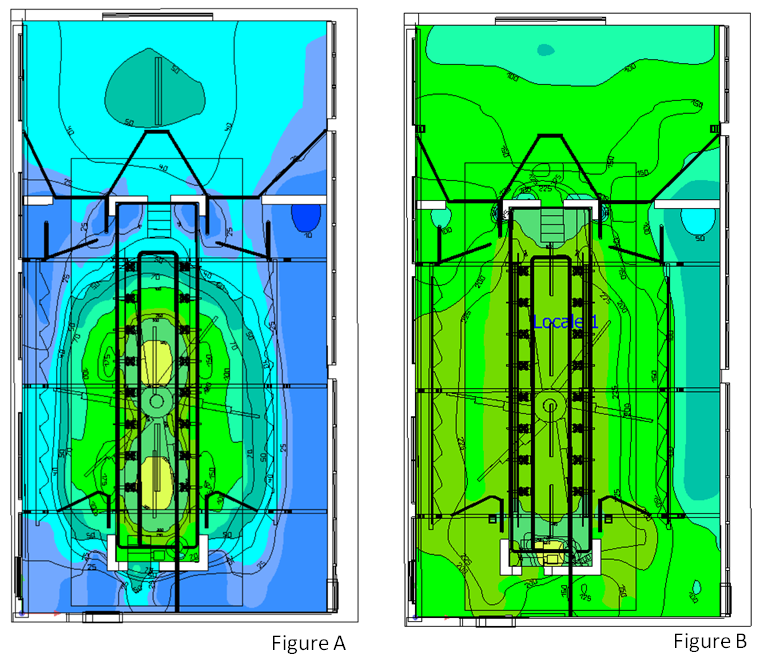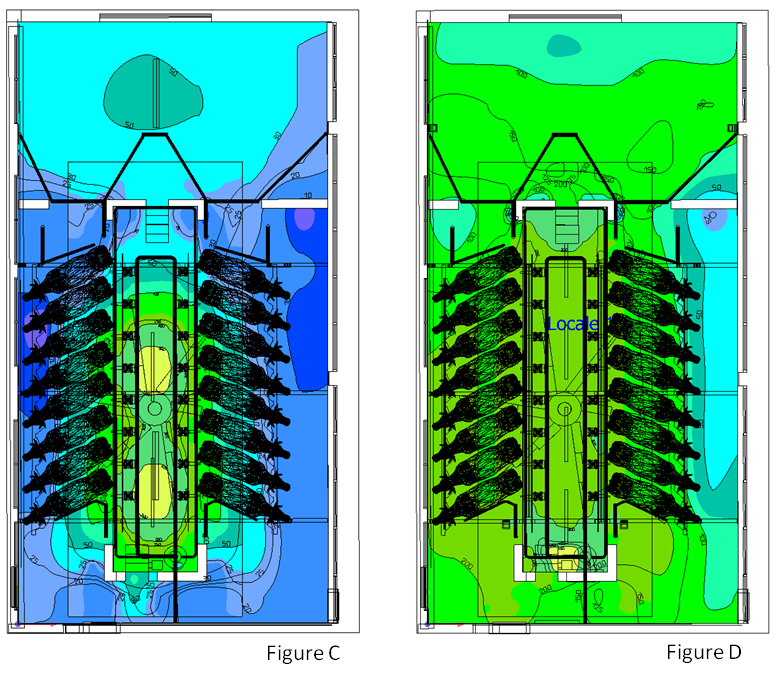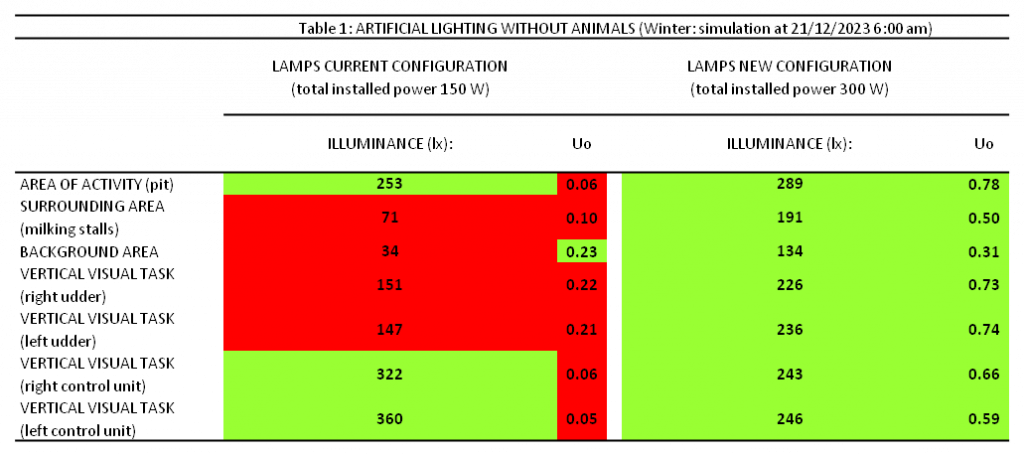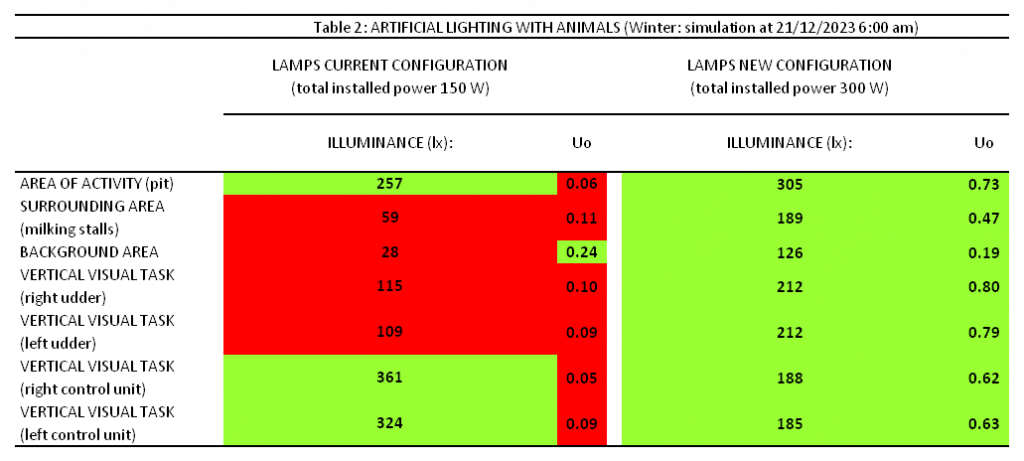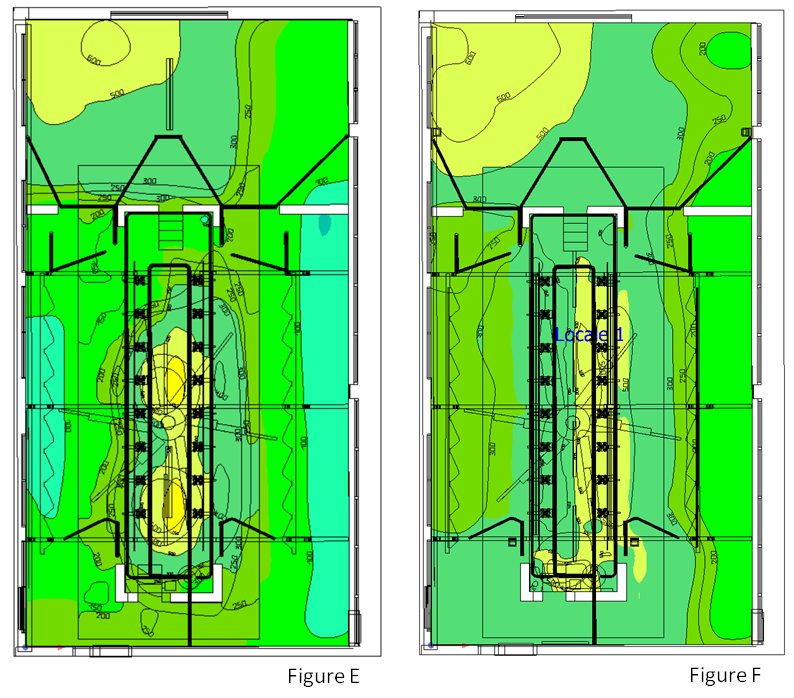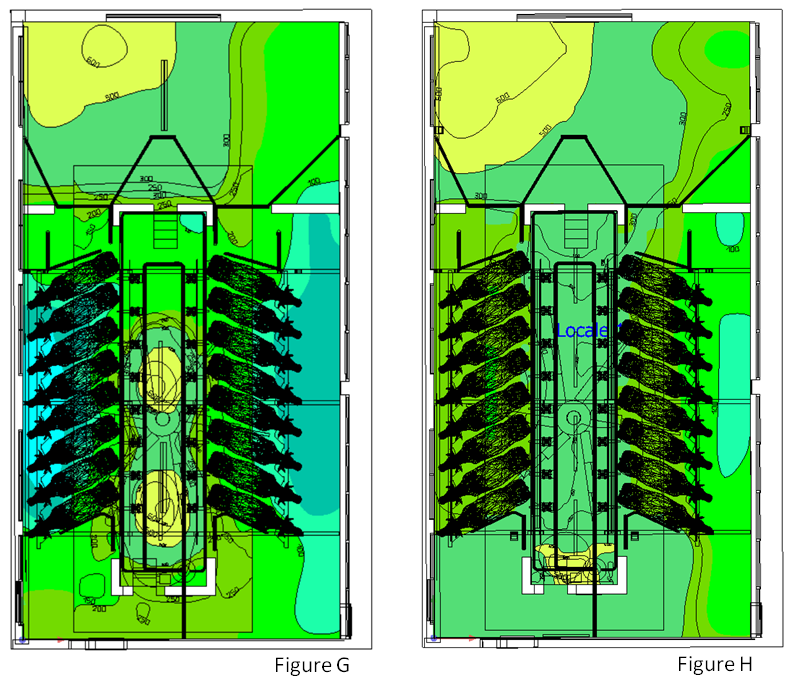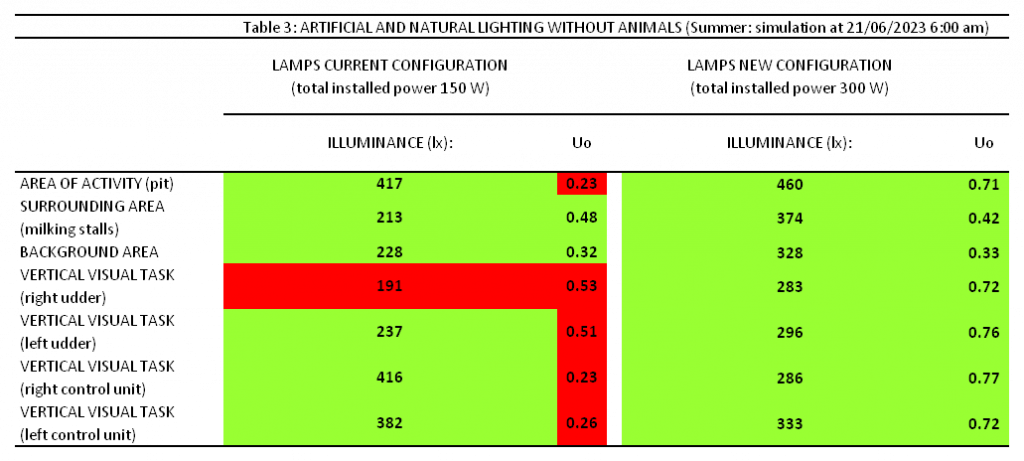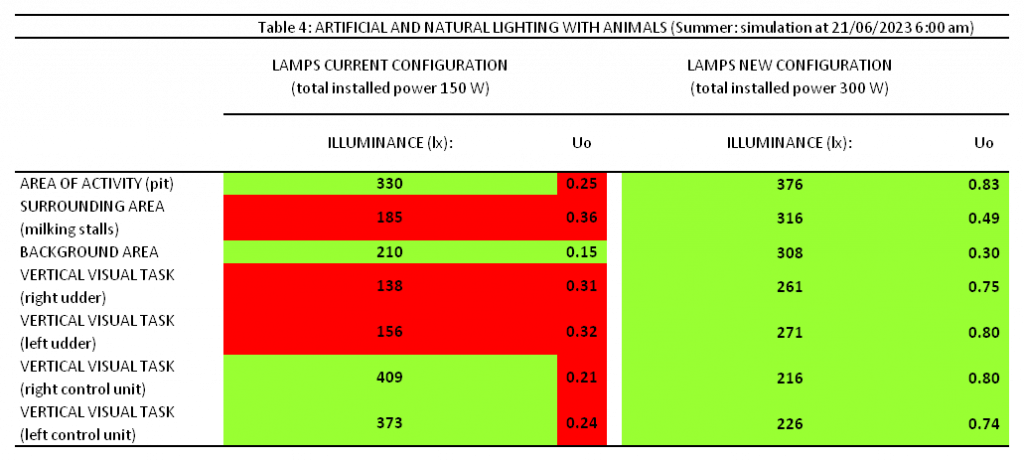The importance of correct lighting
The choice of suitable lamps, correctly positioned, makes it possible to comply with the UNI EN 12464-1:2021 standard and, above all, to guarantee good visual comfort. In the figures below, illuminance is presented using the false colour rendering, where colour variations are associated with illuminance variations.
In the milking parlour of dairy farm 1, the current artificial lighting configuration does not meet the illuminance and uniformity requirements of the above-mentioned standard. The simulation carried out using DIAlux shows that, both with and without animals, the illuminance and/or its uniformity are insufficient in most of the activity areas (Figure A, Table 1 and Figure C, Table 2) when operating exclusively with artificial light (tipically in winter). On the other hand, the use of an adequate number of lamps, suitably distributed, makes it possible to meet the standard requirements in all activity areas, both in terms of illuminance and uniformity of illuminance (Figure B, Table 1 and Figure D, Table 2). More evenly distributed light means better and safer work, correct milking routines, prevention of illness and increased labour productivity.
The integration of artificial and natural light, typically in summer, provides adequate illuminance in almost all activity areas even with the current lighting system, but only without animals (Figure E, Table 3). In the presence of animals (Figure G, Table 4), illuminance is reduced and in many activity areas is lower than required by the standard. Uniformity of illuminance, on the other hand, is not met in almost all areas, whether animals are present or not.
By contrast, the installation of a right number of luminaires, well positioned, ensures optimum illuminance levels and uniformity both in the presence and absence of animals (Figures F and H, Tables 3 and 4).
